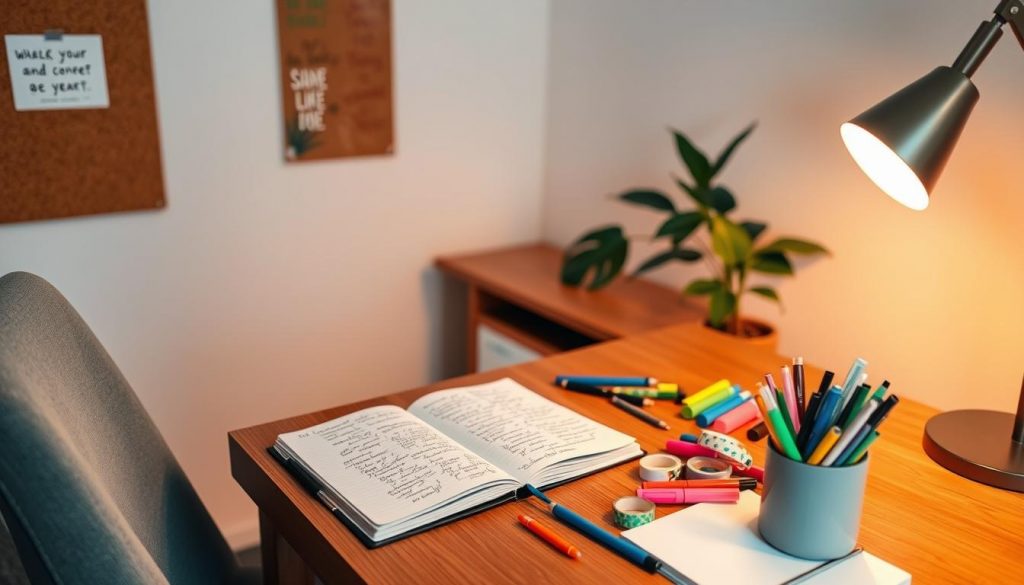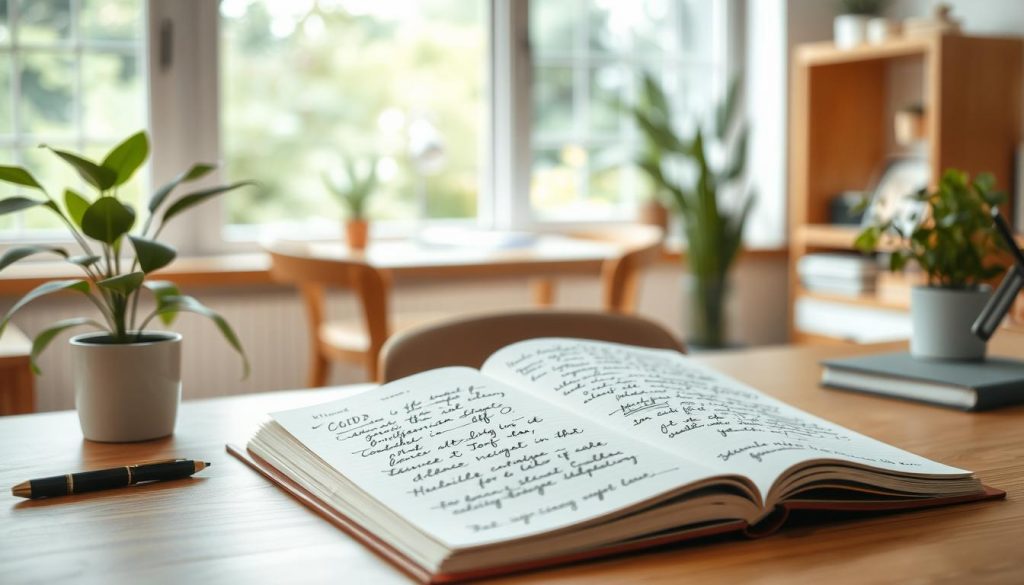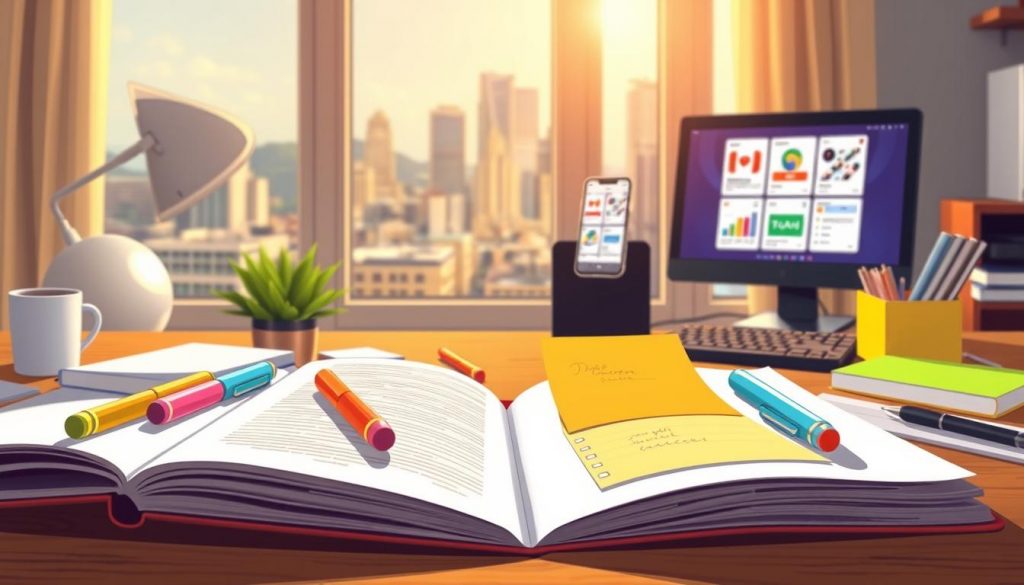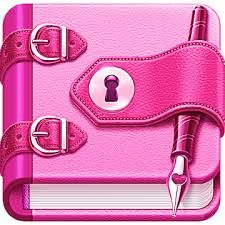Living with ADHD can feel like being in a storm of thoughts and feelings. If you’ve had trouble managing your day, journaling might help. It could be the key you’ve been looking for.
Adults with ADHD face special challenges, like working memory issues. These problems affect 10-30% of their daily life. Traditional ways to manage tasks often don’t work well. But, structured journaling can be a strong tool for managing adult ADHD.
Journaling can turn your jumbled thoughts into a clear path. Studies show it can boost focus by 20%, lower stress by 35%, and improve organization by 40%. It’s not just about writing; it’s about creating a system that fits your brain.
By writing down your experiences and feelings, you can gain insight and control. This method helps with focus, emotional balance, and managing tasks. Journaling is a flexible tool designed for your ADHD needs. Let’s see how it can help you tackle daily challenges.
Understanding the Power of Journaling for ADHD Adults
Living with ADHD can feel like navigating a complex mental landscape. Journaling is a powerful tool to help manage ADHD’s unique challenges. It offers a structured way to improve focus, emotional regulation, and self-awareness.
The Science Behind ADHD and Written Expression
Research shows journaling can positively impact brain function for adults with ADHD. Writing activates multiple cognitive processes. This helps you:
- Organize scattered thoughts
- Reduce stress and anxiety
- Enhance emotional processing
- Improve overall mental clarity
“Writing is a powerful mechanism for self-healing and understanding,” notes academic Louise DeSalvo.
Key Benefits of Regular Journaling Practice
Consistent journaling can transform your experience with ADHD. By using mindfulness techniques through writing, you’ll see big improvements in:
- Focus improvement – Tracking daily experiences helps train your brain to concentrate
- Emotion regulation – Identifying emotional patterns provides better self-management
- Self-awareness – Understanding personal triggers and strengths
Breaking Through Common ADHD Challenges
Journaling offers a unique strategy for addressing typical ADHD obstacles. By dedicating just a few minutes daily to writing, you can develop stronger organizational skills. This reduces time-wasting distractions and helps create a more structured approach to managing your daily life.
Essential Techniques for Starting Your ADHD Journal

Starting a journal with ADHD can feel overwhelming. But, the right approach makes it empowering. Research shows about 60% of people with ADHD find it hard to keep up with journaling. So, finding effective techniques is key.
Choosing the right journaling method is your first step. Here are some brain dump techniques to get you started:
- Digital apps for easy tracking
- Traditional notebook for tactile engagement
- Voice-to-text options for flexibility
Guided journals like the Five Minute Journal can boost daily engagement by 60%. The key is finding a format that resonates with your unique ADHD brain.
“Journaling is not about perfection, but about progress and understanding yourself.” – ADHD Journaling Expert
Here are some practical tips for getting started:
- Set realistic, short journaling sessions (5-20 minutes)
- Use simple symbols to track tasks
- Review and migrate tasks regularly
- Personalize your journal with artwork or unique styles
Studies show that consistent journaling can improve emotional regulation by 40% for those with ADHD. By using these strategies, journaling becomes a powerful tool for self-discovery and organization.
Creating an Effective Journaling Routine and Environment
Starting a journaling habit can change your life if you have ADHD. Your brain needs special strategies for tracking habits and managing time. These make journaling easier and lasting.

Creating a good journaling routine isn’t about being perfect. It’s about finding a system that fits your unique brain. With 78% of people saying they’re more organized with regular habits, finding what works for you is key.
Choosing the Right Time and Place
Pick a time to journal when you’re most focused and have lots of energy. For many with ADHD, this might be:
- Early morning before daily distractions
- Late evening when the house is quiet
- During a natural transition between tasks
Setting Up Your Journaling Space
Your environment greatly affects your focus. Make a special space that helps you concentrate:
- Choose soft, ambient lighting
- Minimize visual clutter
- Use noise-canceling headphones if needed
- Select comfortable seating
“Your journaling space should feel like a sanctuary for your thoughts.”
Building Consistent Habits
To keep up with journaling, track your habits wisely. Start with 5-10 minutes a day. Use digital reminders or tie journaling to a daily habit like morning coffee or evening wind-down.
Remember, being flexible is important. If you miss a day, don’t discourage yourself. The goal is to make progress, not to be perfect, in managing your time and reflecting on yourself.
Mindfulness and Emotional Regulation Through Journaling

Living with ADHD can feel like being in a storm of thoughts and feelings. Mindfulness offers a way to find calm and balance. Journaling is a key tool for managing emotions, helping you understand yourself better.
“Mindfulness is not about perfection, but about awareness and connection with yourself.” – ADHD Mental Health Expert
Studies show mindfulness is very helpful for ADHD. Here are some important findings:
- Mindfulness meditation can decrease ADHD symptom severity by approximately 23%
- Consistent mindfulness techniques improve emotional regulation by 30%
- Just 5 minutes of mindful breathing daily can increase attention span by 25%
Starting a journal can reveal deep emotional insights. Create a space where you can freely explore your thoughts and feelings. Use these mindfulness techniques to improve your journaling:
- Sensory awareness writing: Describe your current moment using all five senses
- Stream-of-consciousness journaling: Write without stopping or editing
- Emotion tracking: Record your mood patterns and possible triggers
By using these methods, you’ll get better at managing your emotions. You’ll feel less anxious and more mentally clear. Your journal will guide you through your ADHD journey.
Advanced Strategies for Focus and Task Management
Managing productivity with ADHD needs special hacks. These go beyond simple planning. Your brain needs unique ways to handle tasks.

For adults with ADHD, structured methods can change how you work and tackle personal projects. About 11 million adults in the U.S. have ADHD. The right journaling techniques can really help.
Mind Mapping Techniques
Mind mapping is a great visual tool for organizing thoughts. It breaks down big tasks into smaller parts:
- Create a central topic in the middle of your page
- Branch out with related subtasks and ideas
- Use colors and symbols to show priority levels
- Connect related ideas with lines or arrows
Time Blocking Methods
Time blocking changes how you schedule your day. It lets you focus on tasks without distractions.
“Structure creates freedom for the ADHD brain” – ADHD Productivity Expert
Progress Tracking Systems
Keeping track of your progress is key to staying motivated. Try these methods:
- Log your tasks in digital or physical journals
- Make a visual of your achievements
- Set up rewards for finishing tasks
- Change your tracking method as needed
Studies show to-do lists can increase productivity by 40% for adults with ADHD. Using these advanced strategies helps you manage tasks better.
Customizing Your Journal for Maximum Productivity
Creating a journal that fits your ADHD brain needs creativity and trying new things. Everyone is different, and there’s no one-size-fits-all solution. Studies show 75% of people with ADHD like to plan in ways that fit their needs.
Creating a structure is key for managing ADHD. Using colors and symbols can make journaling better. Research finds 60% of ADHD folks do well with clear, simple designs. Try out different layouts and ways to track your tasks to find what works best for you.
Growing personally means being flexible with your journal. Try time-blocking to cut down on procrastination by 50%. Use lists, goal sections, and checklists to stay focused and motivated. Your journal should grow with you, changing as you learn and grow.
Be patient with yourself as you start. Begin with simple methods and see what works. With 80% of ADHD folks seeing better productivity through custom planning, you’re on the right track. Your journal will become a powerful tool for your unique way of thinking and working.
FAQ
How can journaling help manage my ADHD symptoms?
What type of journal should I use if I have ADHD?
How often should I journal if I have ADHD?
What should I write about in my ADHD journal?
Can journaling really improve my focus and organization?
How do I stay motivated to continue journaling?
Are digital or physical journals better for ADHD adults?
How can journaling help with emotional regulation?
What if I struggle to start or maintain a journaling habit?
Can journaling replace ADHD medication or therapy?
Source Links
- Journaling for ADHD: Benefits, Tips, and Prompts
- The Ultimate Guide to Journaling for ADHD | Online Journal and App by Reflection.app
- The Power of Journaling for Adults with ADHD – Edge Foundation
- Writing My Way to a Happier Me
- ADHD Journaling: Benefits, Prompts & Tips – Forbrain
- How to Journal Even When You Have ADHD — Hacking Your ADHD
- How to Manage ADHD with Your Bullet Journal
- “Bullet Journaling is Saving My Sanity in Quarantine.”
- Unlocking Focus: How Journaling Can Help Adults Manage ADHD Symptoms
- Journaling Tips for Adults with Learning Disabilities or Neurodivergent Traits
- How to Start Journaling for Mental Health: Start a Journal
- A Practical Guide to Developing Attention and Emotional Balance
- Mindfulness Meditation Training for Attention-Deficit/Hyperactivity Disorder in Adulthood: Current Empirical Support, Treatment Overview, and Future Directions
- Strategies for Adults Living With ADHD | Psychiatrists in California
- How to Focus with ADHD: 12 Effective Strategies
- Tips for Managing Adult ADHD – HelpGuide.org
- “Bullet Journaling is Saving My Sanity in Quarantine.”
- Choosing the Best Planner for an ADHD Brain | Erin Condren

